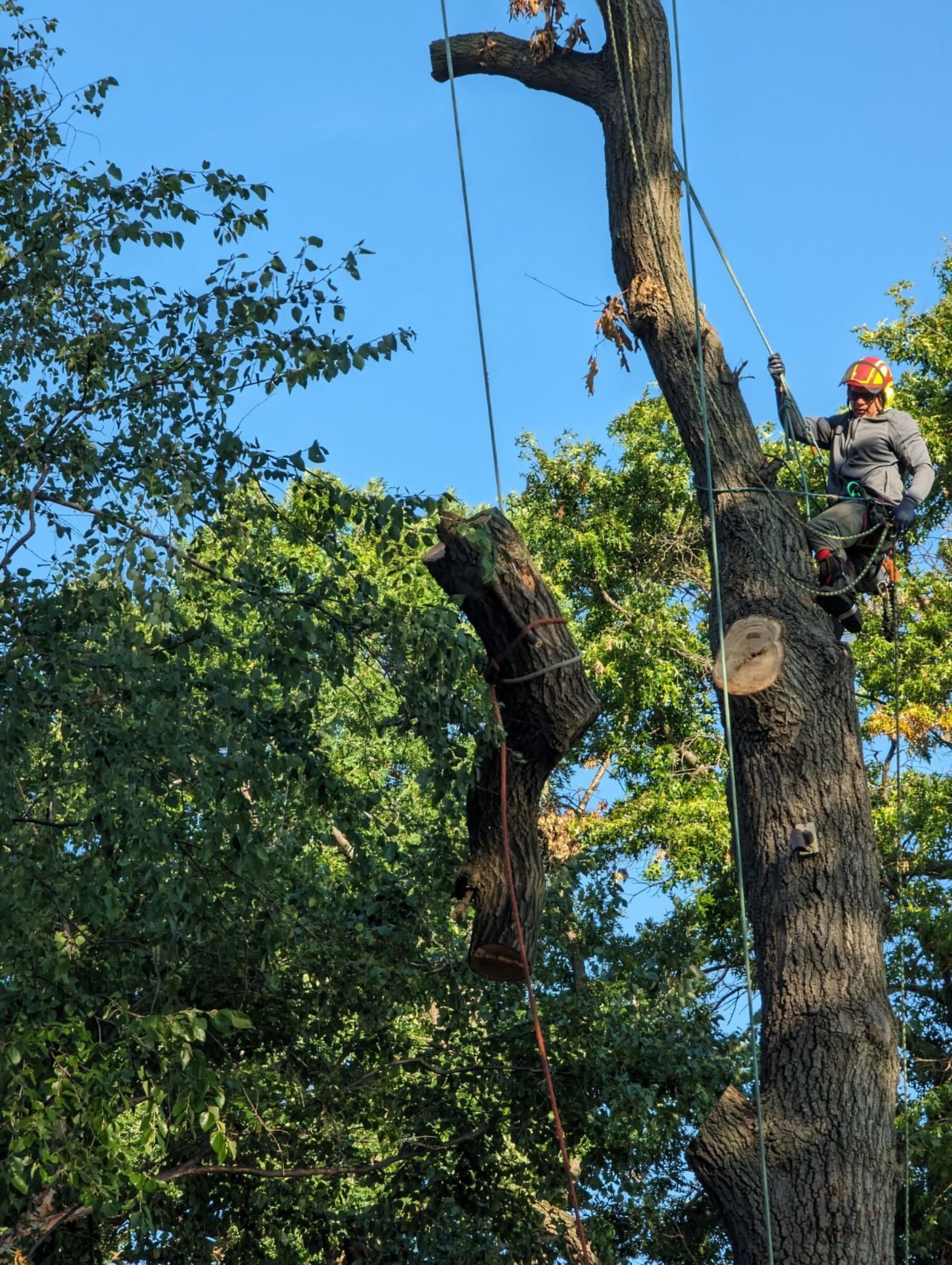
When and Why to Remove an Oak Tree Affected by Disease
Oak trees are a familiar part of the Twin Cities landscape, known for their size, shade, and longevity. But when an oak tree becomes diseased, damaged, or unstable, it can quickly shift from an asset to a serious safety risk. Removal is often the safest and most responsible option—especially when the damage is irreversible or the disease threatens other trees nearby.
Let’s work through when it makes sense to remove an oak tree and why timing and safety protocols matter more with oaks than with many other species.
Why Diseased Oaks Are a Special Case
Diseases like oak wilt spread rapidly in Minnesota and can compromise healthy oaks in the surrounding area if infected trees aren’t dealt with properly. While Tree Top Climbers does not provide disease treatment, we often help homeowners safely remove oaks that have already declined beyond recovery.
Early signs of trouble may include:
- Leaf browning or premature leaf drop
- Large dead limbs in the upper canopy
- Fungal growth near the base
- Deep trunk cracks or splitting bark
Once a tree is structurally unsound or clearly dying, removal helps reduce the risk of falling limbs, storm damage, or disease transmission to other trees.
When to Schedule Oak Tree Removal
The best time to remove an oak tree is during late fall or winter—typically November through March—when the risk of spreading oak wilt is at its lowest. That’s because the beetles that carry the fungus are inactive in cold weather, and pruning wounds are less likely to attract them.
Avoid removal during April through July, unless the tree is an immediate hazard or has already fallen.
Safety Risks of Waiting Too Long
Delaying the removal of a dying oak can lead to:
- Unpredictable limb failure during wind or snowstorms
- Damage to nearby homes, vehicles, or utility lines
- Increased risk to people and pets near the tree
- Compromised removals later, when the tree becomes too unstable to climb or rig safely
Tree Top Climbers provides tree removal services designed to reduce risk and minimize disruption to your property—especially when large or potentially hazardous oaks are involved.
Do You Need to Remove the Whole Tree?
In some cases, only part of the tree may need to come down—like a large damaged limb or a declining lead trunk. But complete removal is usually the safest and most cost-effective option when the tree is clearly beyond saving.
If you’re not sure, Tree Top Climbers can provide guidance based on visible structural issues and safety concerns. We do not diagnose disease, but we can help you take appropriate next steps once the tree is already compromised.
Plan Ahead for a Safe Removal
Oak removals often require specialized equipment, especially when the tree is close to buildings or power lines. Scheduling early allows for a safer, more efficient process—especially during the preferred fall and winter window.
We recommend reaching out for a quote as soon as you suspect your oak may be failing. Our team can help assess removal options and identify any obstacles that may affect timing.
When an oak tree starts to decline, waiting too long can increase both the cost and the danger. Removing a dying oak at the right time—before winter storms or structural collapse—helps protect your property and prevents problems from spreading to nearby trees.